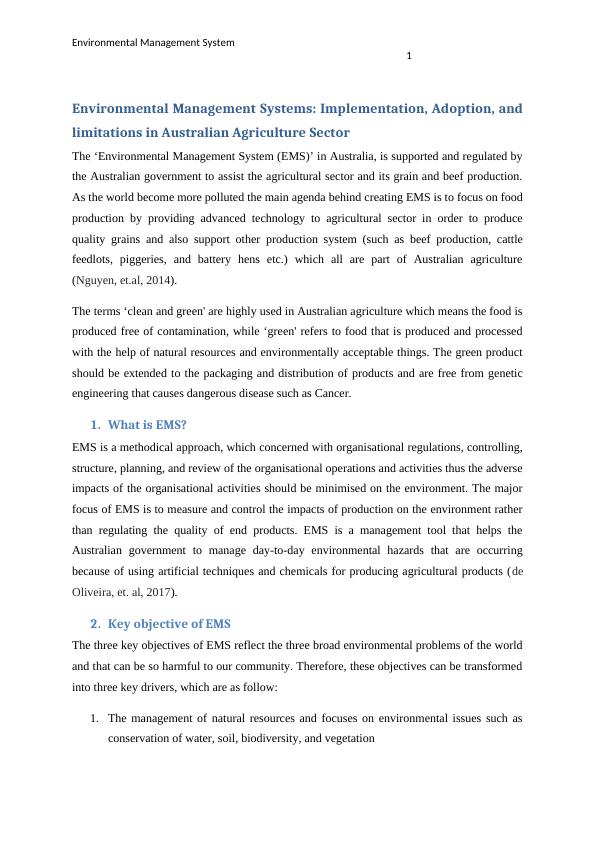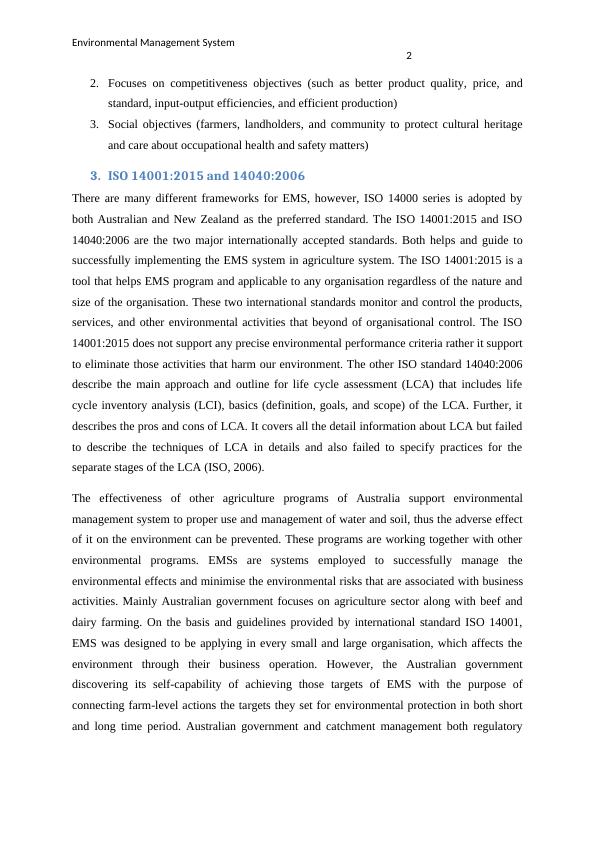Environmental Management System: Implementation, Adoption, and Limitations in Australian Agriculture Sector
7 Pages2240 Words355 Views
Added on 2023-06-05
About This Document
This essay discusses the implementation, adoption, and limitations of Environmental Management System (EMS) in Australian agriculture sector. It covers the key objectives of EMS, ISO 14001:2015 and 14040:2006, activity flow of EMS, issues and solutions, EMS adoption, and overcoming limitations in the adoption of EMS in Agriculture.
Environmental Management System: Implementation, Adoption, and Limitations in Australian Agriculture Sector
Added on 2023-06-05
ShareRelated Documents
End of preview
Want to access all the pages? Upload your documents or become a member.
Environmental Management System: Implementation, Voluntary Adoption, and Limitations in Australian Agriculture Sector
|6
|2132
|319
Environmental Management System: Implementations, Voluntary Adoption, Issues, and Limitations in Australian Agriculture Sector
|7
|2143
|321
Environmental management Systems PDF
|10
|2179
|24
Sustainable Manufacture: ISO-14001 and its Applicability
|9
|2517
|21
Sustainable Manufacture: ISO-14001 Certification and its Applicability
|10
|2693
|93
Implementing Environmental Management Systems in the Australian Agriculture Sector
|9
|2292
|380



